“The same God that placed that star in a precise orbit millennia before it appeared over Bethlehem in celebration of the birth of the Babe has given at least equal attention to placement of each of us in precise human orbits so that we may, if we will, illuminate the landscape of our individual lives, so that our light may not only lead others but warm them as well.” (Neal A. Maxwell, That My Family Should Partake (1974), 86.)
How does an American woman, born and raised in Utah, come to write letters in Spanish to a Catalan gentleman living in Barcelona, Spain in the early 1950s? As with all God’s timing, you have to look at what happened years earlier.
To keep in line with part 1 I’m sharing parts of my grandmother’s autobiography. What you need to know before the story picks up is that my grandmother went to the University of Utah at the age of 16. After graduating in 1943 she and her sister, Norma, and three friends attended a summer school in Mexico City. After the six weeks of school the friends returned to the U.S. but Norma and my grandmother stayed until December of 1943.
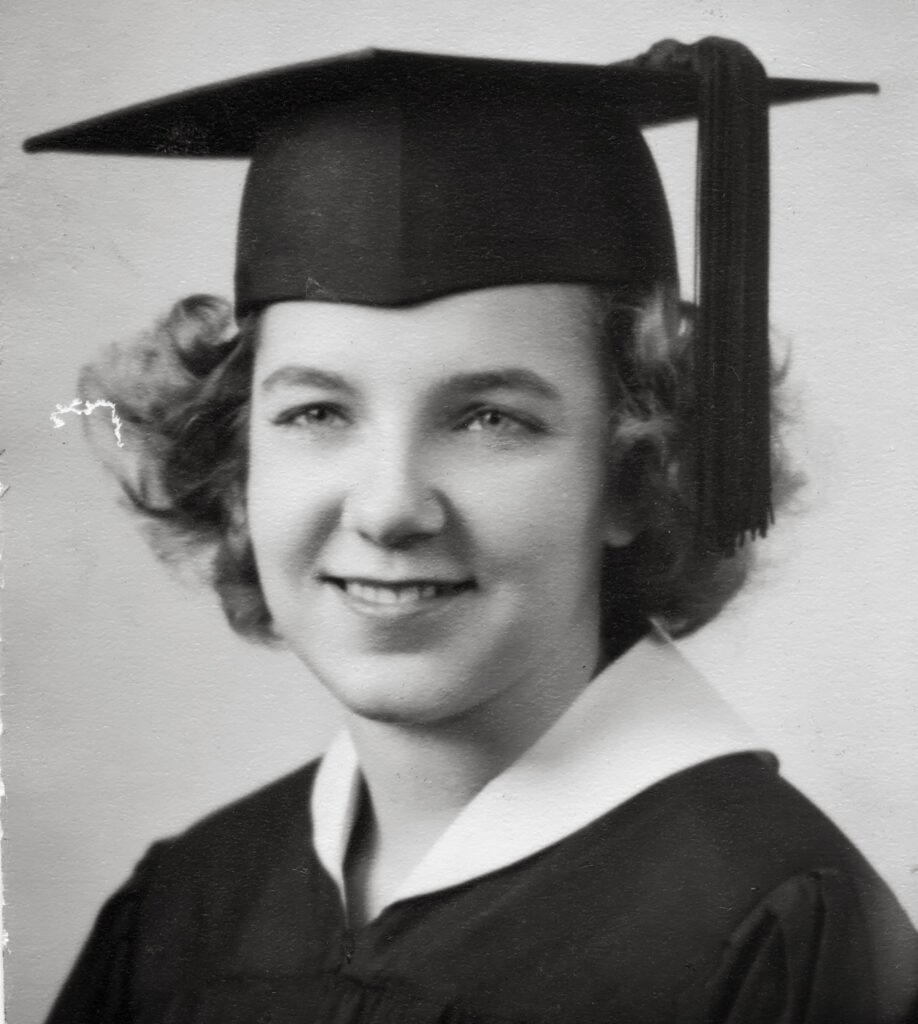
Meet Betty Jean Gibbs.
“On Saturdays we visited sites such as Teotihuacan, Zochicalo, and others. On Sundays we attended the little LDS branch in Ermita, the only branch of the Church in Mexico City at that time. We got to know the president of the mission, Arwell L. Pierce.
“Finally in December of 1943 it was time to go home. . . In January of 1944 after Norma and I returned from Mexico, I got a job in the Superintendent of School’s Office of the Salt Lake City School System. . . One of the girls working in School Supplies showed me a book of Gregg Shorthand in Spanish. The signs were more or less the same as the English Gregg System I learned in high school. . I bought a copy and began studying the Gregg System in Spanish at home.
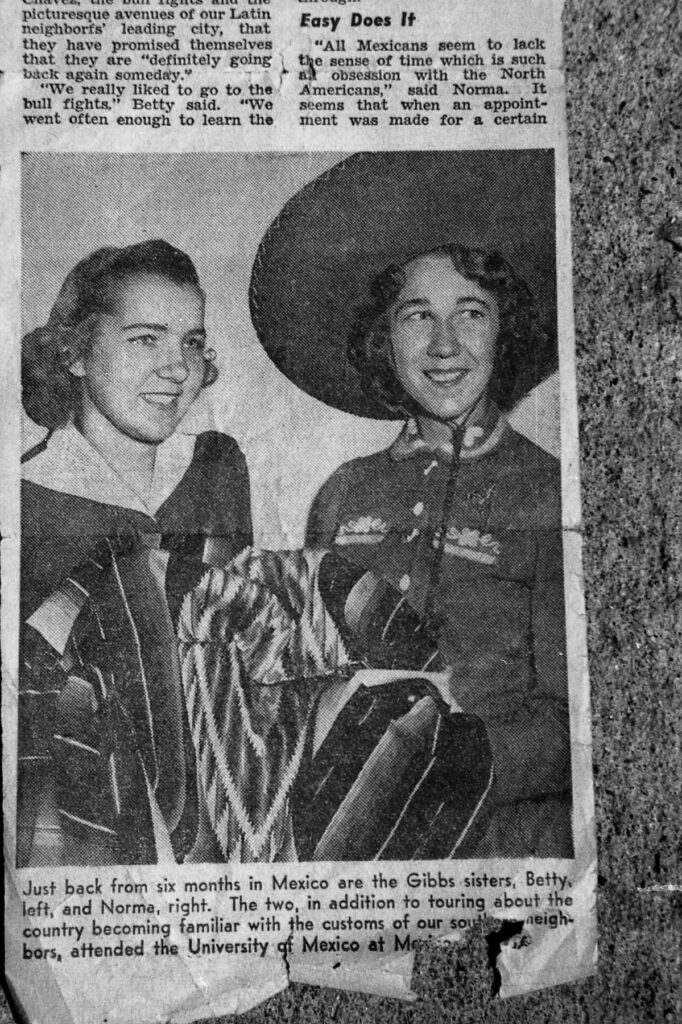
“During this same time I ran into Beth Davis, my old buddy from Emerson School. She was an adventurous spirit and became very interested in listening about my recent trip to Mexico. Soon we began making plans. We would return to Mexico City, get jobs, and live there for a time. . . In May I resigned from my job at the Superintendent’s Office, and in June, Beth and I climbed on another Greyhound Bus and headed down to Mexico.
“After finally arriving in Mexico City, within days we found out what we should have checked on long before leaving Salt Lake: that it was against the law for a foreigner to work in Mexico without a special visa. We only had tourist visas. So much for that idea. Oh well, we said, no matter. The prices were low, we still had money, we would enjoy ourselves as tourists, and in a few weeks return home. So much for studying Gregg Spanish Shorthand and quitting nice jobs to work in Mexico City.
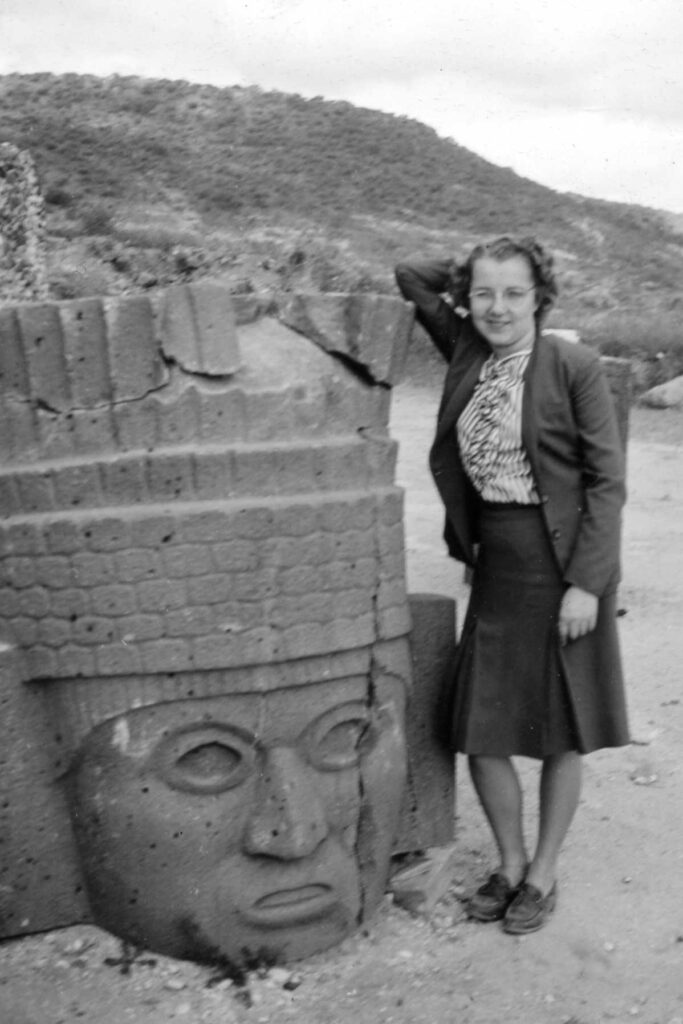
“On Sunday I attended the Ermita Branch where Norma and I had gone during our stay. I was late, and as I waited in the foyer, President Pierce, president of the mission, also arrived. He remembered me from the previous year and asked what I was doing down there. I told him I had been looking for a job. I explained that I had worked as a secretary after graduating from the U, and had been learning Gregg Shorthand in Spanish. President Pierce’s next remark really took me by surprise: “I can give you a job if you want – one that will last two years!” Of course he meant a mission. That was an amazing suggestion, one that I had never even thought of, but somehow it sounded very good. Later on that week I went into the mission office where we could talk more in detail.
“The situation in the Mexican Mission at that time was that only Mexican citizens could be missionaries or “ecclesiastical agents.” . . .Only a Mexico-born person could become a “minister of religion.” . . Providentially (the Lord always knows), President Pierce and all his missionaries had been born in the colonies established by Mormon Polygamous families in the 1890’s in the State of Chihuahua. They all fell into this category of having been born on Mexican soil. . .At the time I met President Pierce, his secretary, a sister missionary from the Colonies, had just been released. President Pierce needed someone to write in English for mission affairs, for correspondence with missionaries and Salt Lake, and for letters of counsel to his sons who were operating the family lumber business in El Paso. He also needed a secretary to write in Spanish to his Mexican missionary and local Mexican leaders.
“He arranged for me to phone my parents to see if they would be willing to support me on a mission. They agreed (and were probably relieved). Then a second call was made to my mother’s cousin, Elder Marvin O. Ashton in the Presiding Bishopric. He arranged for me to receive a mission call. And I was called “by telephone” to serve a two-year mission in Mexico. The understanding was that I would be assigned to the office and would not do too much active missionary work in the field. I could not claim Mexican citizenship as could my companions so it was not “legal” for me to work out in the field.
“Next I spoke to my friend Beth. She by then, in her outgoing manner, had also made other friends. Beth stayed a few weeks longer in Mexico and then returned to Salt Lake.
“I entered the Mexican Mission and was set apart by President Arwell L. Pierce. My actual call was dated August 11, 1944. I moved into the mission home, which was in Lomas de Chapultepec.
[Betty loved her mission. She worked in the mission office but was also able to tour around the mission for various assignments]
“In October [1945] President Antoine Ivins and his wife visited the mission. An all mission conference was held in Ermita. An important announcement was made that in November the first endowment sessions in Spanish were to be held in the Arizona Temple. The members were encouraged to prepare themselves spiritually and financially and try to make the journey. Since I had been called directly from Mexico I had never received my endowments, so along with several Mexican elders in the same circumstances, I would be allowed to go. These elders were Arturo de Hoyos, Benito Garcia, Alfonso Rodriguez, Manuel Moncivais, Rafael Juarez, and Saul Perez. We were all excited to go, but I was nervous, wondering if I would be able to understand the temple ceremony in the Spanish language. I didn’t know what to expect. . . It was such an exciting time. President David O. McKay, then a counselor in the First Presidency, was there and presided at the meetings which began on Sunday, November 4. He explained that this was the first time the temple ordinances would be given in a language other than English. Brother Eduardo Balderas, who had done the translation, was there to translate for the president. President Ivins would speak in Spanish.
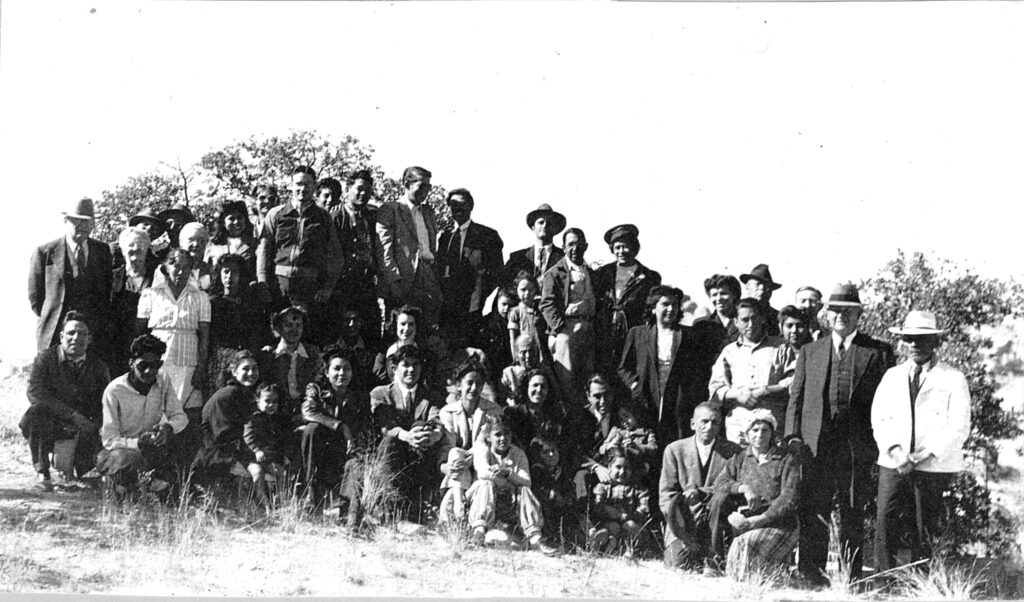
[After staying in Mesa, AZ for several days the missionaries and Mexican saints all returned to Mexico. Betty continued serving her mission.]
During the last part of my stay in Tierra Blanca, President Pierce came bringing Brothers Arthur Jensen and Eduardo Balderas with him to look over some land the Church was considering buying for a chapel. Art was in construction and did the surveying on the property. I had a chance to talk to Eduardo, and this was when he asked me to look him up in Salt Lake after my mission, as he would be needing a Spanish secretary. This was a fortunate meeting for me.
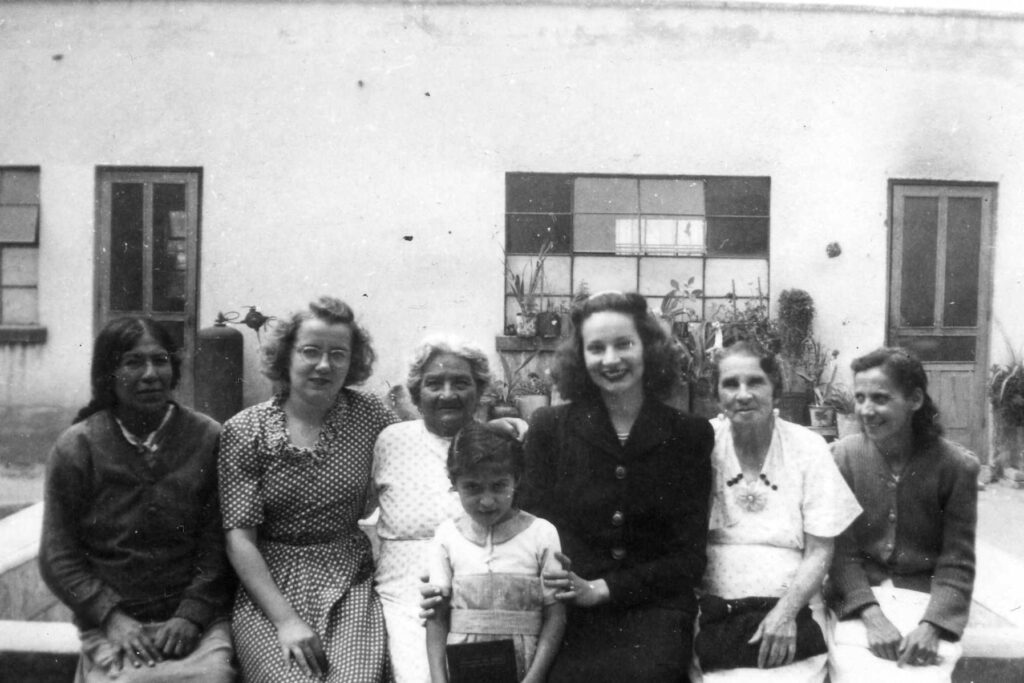
[Betty completed her mission on July 2, 1946.]
“After returning to Salt Lake, I reported my mission to Elder Dilworth Young, a member of the First Quorum of Seventy. . . After a few days had passed, I went to see Brother Eduardo Balderas at the Church Offices at 47 East South Temple. It was arranged that I would be his secretary. While the person who had been doing his secretarial work was being transferred to another department, I was assigned to work in another office. The person I was assigned to work for was Elder Spencer E. Kimball, one of the newest apostles. He had just returned from a tour of the Hawaiian Mission and was resting at home. . .
“The time came for me to begin working for Eduardo. At the time he was working on the second floor, sharing an office with the Secretary of the Radio, Publicity, and Mission Literature Committee. His name was Gordon B. Hinckley. Brother Hinckley’s secretary, Louise Russell, was also the secretary for Apostle Stephen L. Richards. Elder Richards’ office was in the southwest corner of the Church Office Building, overlooking South Temple. Louise and I shared the adjacent office, and Brother Hinckley and Eduardo shared the next office to the north. . .
“In the office the two of them shared, from his corner, Eduardo would dictate to me his translations of Primary, Relief Society and Sunday School lessons. I would take them down in Gregg Spanish Shorthand, type them out, and he would make the corrections. Then I would retype the final copy. . .
“These lessons were mailed to the Spanish-American and Mexican Missions, and little by little, to South American and then Central American Missions. . .
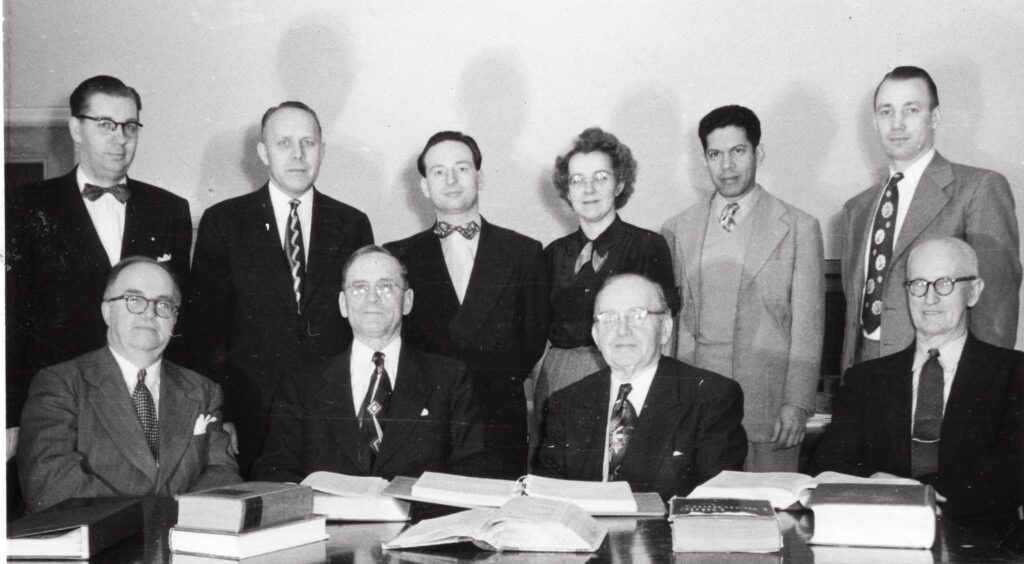
“There was one extra special event that occurred during 1948. From the First Presidency’s office, Eduardo was forwarded a letter written to the Church in Spanish by a young man from Barcelona named Jorge Ventura. In it he inquired about our teachings. Eduardo was told to maintain correspondence with this young man, and he sent him pamphlets in Spanish and even a Tabernacle Choir recording. . .
“My sister Norma was to finish her mission [to France] in June of 1950. One day a few months before, Dad phoned me at work and said, “How would it be if you met Norma over there and the two of you traveled through Europe together? You could visit my brother Tan in London and could even visit that family (the Venturas) that you talk about in Barcelona.” What a great idea!
[After meeting Norma in Paris they traveled to Belgium, Holland, Germany, Austria, Switzerland and Italy.]
“Next, we traveled on to Spain where a very young Jorge Ventura met us in the train station. He seemed like a little boy, although he was now 18. He took us to their apartment. We met the family, Yaya, Juan, Joaquina and her husband Luis, Tio Enric, Yai, Yaya’s mother. They all lived in one apartment.
“There were only four bedrooms, but somehow Norma and I were given one of them. For the next four days we were taken on tours of the different parts of the city, Plaza Catalunya, Ramblas down to the port, the replica of Columbus’ ship, Montjuich, Tibidabo. Juan took his turn being the tourist guide, and we had some fun conversations as we traveled about . .
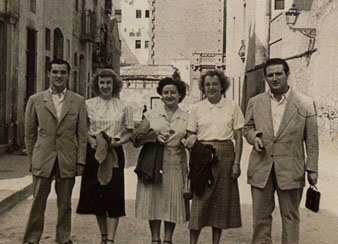
“Eduardo maintained contact with the Ventura family, sending pamphlets and encouraging letters. And after Norma’s and my visit to Barcelona in 1950, Juan and I began to write regularly. Jordi was able to obtain a visa for France and was baptized on Sept. 28, 1950. Juan was not able to get a visa until a year and a half later, and he was baptized April 29, 1952. As he has written in his history, it was a cold day on the seashore.
“We talked to Jordi about the possibility of his attending the Y. He was such a bright young man and had not been able to really finish his education in Spain. Just about that time I accidentally met President Ernest J. Wilkinson, the BYU president, on the main floor of the Church Office Building, Ordinarily I would never think of walking up to someone I don’t know, but I found myself asking President Wilkinson about the possibility of Jordi’s getting a scholarship. He said for Jordi to contact him. And soon after that, a scholarship had been arranged. Jordi came to Salt Lake during the summer of 1953. He stayed at our home, waiting for the fall quarter to begin at the BYU. He did some translating for Eduardo, and later moved down to Provo.
“On weekends, Jordi usually came to Salt Lake, and we kept the upstairs northeast bedroom reserved for him. On one of these visits he told me the family had written that Juan had been imprisoned for having held a meeting with a group of Mormon sailors in the apartment in Barcelona. He was beaten up and interrogated, then after four days was released. His “carnet” or identity card and passport had both been taken from him. So now he was unable to work, to help support the family, and was unable to leave Spain. The news affected me a great deal. I thought about him constantly and the desperate situation he was in.
“Of course, I talked this over with my friend Norma Schofield, and said that I would like to visit Barcelona again and confirm the feelings I had towards him, whether it was just worry and feeling sorry, or a strong affection. Norma had been saving her money to buy a car, but she immediately offered to use the money for a Spain trip to accompany me. So that became our plan. We would travel in February of 1954.”
Read part 3 of Juan and Betty’s story here.
What a fascinating story with so many adventures. I was excited to see the photo of the translation department. My first job in college was as a typist working for Carl Eric Johansson when he was a professor of family and local history at BYU . Thank you so much for sharing!
Wow! That’s a fun connection! When I posted the story on Facebook a son of one of the translators saw it and left a comment. So neat!